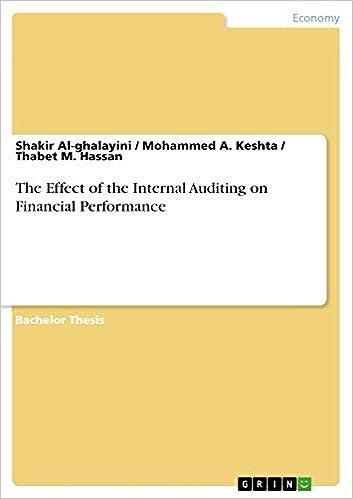Question
Bowearth Limited (BL) is in the lumber business. The company sells pulp and paper products as well as timber and lumber. It has over 500,000
Bowearth Limited (BL) is in the lumber business. The company sells pulp and paper products as well as timber and lumber. It has over 500,000 hectares of timberland that it either owns or leases. The company's shares trade on the public stock exchange. Net income for the past few years has been positive and increasing, and it has averaged approximately $1 million over the past five years. This year, however, due to various factors, the company is expecting to just break even.
During the year, BL announced an exclusive licensing agreement with Lindor Inc. (LI), an unrelated company. Under the terms of the agreement, BL will have exclusive sales and distribution rights for LI's technology and products. In return, it will pay LI royalties. The technology and products target the pulp and paper industry. During the first five years of the agreement, royalty payments that BL must pay to LI are 3% of sales in the first year, 2% in the second, and 1% thereafter. A minimum royalty of $500,000 must be paid regardless of the level of sales. LI has been in business many years and the technology is proven and in great demand. It is therefore very likely that BL will have to pay.
The U.S. government has recently levied anti-dumping fees of 8% on all softwood lumber shipped to the United States. Anti-dumping fees are levied on foreign imports that government thinks are being sold below fair market value. The U.S. government has also imposed countervailing duties of 20% on Canadian lumber. Countervailing duties are meant to counteract imported goods that are subsidized by their home countries. The amounts must be paid by the company to the U.S. government in order to continue to sell in the United States. The Canadian government has challenged the right of the U.S. government to charge these duties and has appealed to the World Trade Organization (WTO). Canada feels that, under both WTO rules and the North American Free Trade Agreement (NAFTA), such charges cannot be legally levied. In the meantime, BL has been accruing and setting the amounts aside in cash deposits with the bank just in case the appeal is unsuccessful. The amounts accrued and set aside to date are approximately $3 million. The U.S. government is allowing the company to ship lumber as long as the cash is set aside. To date, the appeal process is going well, and the Canadian government feels that the duties will at least be reduced significantly, if not completely eliminated. There are rumors that the duties may be cancelled next year.
In addition, BL is currently being sued by a former major shareholder, who alleges BL provided misleading financial statements. The lawsuit alleges that net income was materially misstated. The case has not yet gone to court. BL feels that the case is not very strong but has nonetheless fired the president, William Chesiuk, to be on the safe side. As a result, Chesiuk is suing BL for wrongful dismissal, seeking a lost bonus of $300,000 as well as lost future income of $10 million. BL is investigating the claim of overstated net income and, to date, has not found anything that indicates a material misstatement.
BL's controller, Youssef Haddad, is unsure of how to book all of the above in the financial statements (or if he even should). He has a meeting with the bank next week to discuss increasing the company's line of credit. He is hopeful that once the ruling comes down from the World Trade Organization, the increased line of credit will not be needed. In the meantime, the bank has signaled that it will be looking at the company's liquidity very closely. The auditors will also be coming in to review the statements in the next month.
question - Read the case above, adopt the role of Youssef Haddad and discuss the financial reporting issues.
Hints
- Start with an overview which should include your role, the users, and any other pertinent information specific to the case.
- For each financial reporting issue, set it up using the CPA Way
- Assess - state the issue
- Analyze - technical information for the issue based on accounting criteria and relate it the case facts
- Advise make a recommendation that flows from your analysis
Step by Step Solution
There are 3 Steps involved in it
Step: 1

Get Instant Access to Expert-Tailored Solutions
See step-by-step solutions with expert insights and AI powered tools for academic success
Step: 2

Step: 3

Ace Your Homework with AI
Get the answers you need in no time with our AI-driven, step-by-step assistance
Get Started


